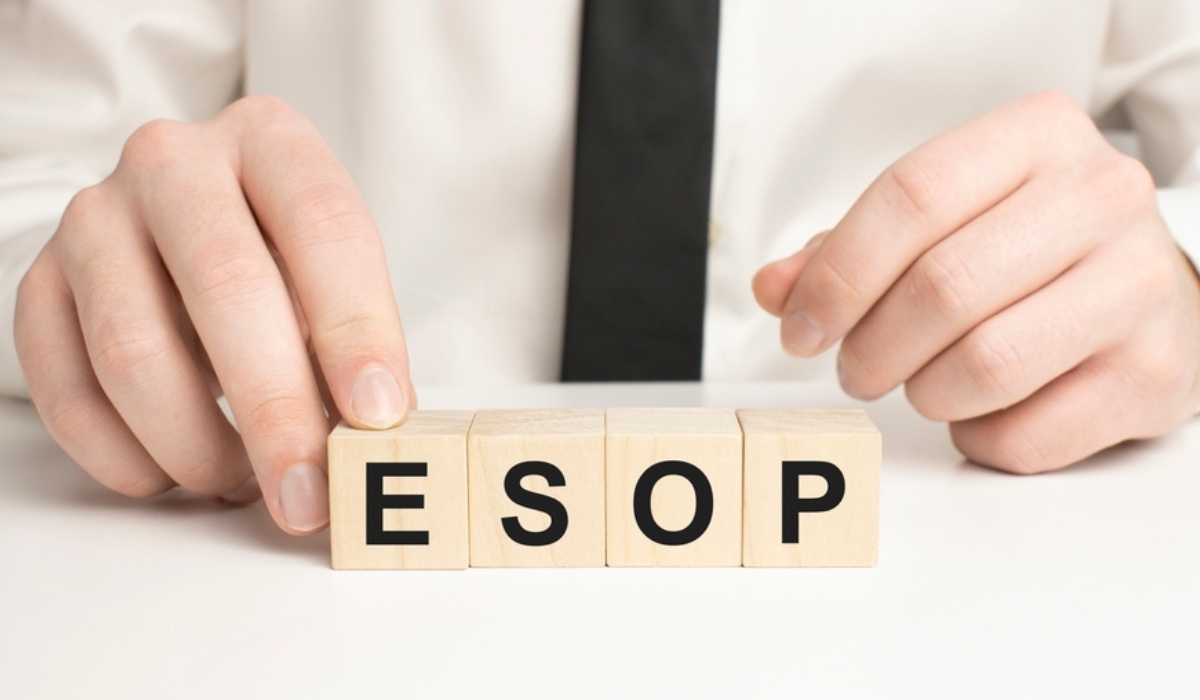The Benefits and Risks of Employee Stock Ownership Plans: Pros and Cons for Business Owners and Employees
"When employees have a stake in the company's success, they are more likely to go above and beyond in their work, leading to increased productivity and profitability." - Richard Branson
Brief Insight
Employee Stock Ownership Plans (ESOPs) are retirement plans that invest primarily in the company's stock and are designed to provide employees with an ownership stake in the company. ESOPs can provide significant tax benefits for business owners and can also serve as a tool for rewarding and retaining employees, as well as incentivizing them to work towards the long-term success of the company.

PHOTO: Shutterstock
Understanding the Essence of Employee Stock Ownership Plans (ESOPs)
Employee Stock Ownership Plans (ESOPs) are a type of employee benefit plan that provides employees with an ownership stake in the company for which they work. ESOPs are typically established as a retirement plans and the plan purchases company stock on behalf of the employees. As employees accrue seniority and time in the company, they become vested in the ESOP and are entitled to receive their share of the ESOP's assets when they retire or leave the company.
One of the primary benefits of ESOPs for business owners is that they can provide significant tax advantages. For example, business owners can deduct the contributions made to the ESOP as a business expense, which can reduce their taxable income. In addition, the sale of company stock to the ESOP can be structured as a tax-deferred transaction, which can provide substantial tax savings for the business owner.
ESOPs can also be a powerful tool for rewarding and retaining employees. By providing employees with an ownership stake in the company, ESOPs can create a sense of ownership culture, where employees are more engaged in the success of the company and are motivated to work towards its long-term success. ESOPs can also serve as a valuable tool for attracting and retaining top talent, as employees are more likely to stay with a company that offers an ownership stake.
Another advantage of ESOPs is that they can provide a succession plan for business owners who are looking to retire or sell their businesses. By selling shares of the company to the ESOP, the business owner can gradually transfer ownership and control of the company to the employees, while still maintaining a role in the company until they are ready to retire.
However, there are also risks associated with ESOPs. One potential risk is that employees' retirement savings are heavily invested in the company's stock, which can be risky if the company experiences financial difficulties or a decline in stock value. ESOPs can also be complex to administer, and business owners should seek the advice of qualified professionals when considering whether an ESOP is appropriate for their company. Overall, ESOPs can be a valuable tool for business owners and employees, but careful consideration and planning are necessary to ensure that the benefits outweigh the risks.
Last Trends in Employee Stock Ownership Plans
The increased popularity of "sustainable" ESOPs, which aim to have a positive social and environmental impact in addition to providing financial benefits to employees.
The growing interest in "hybrid" ESOP structures, which combine features of ESOPs with other types of employee ownership plans, such as worker cooperatives.
The Evolution of Employee Stock Ownership Plans: A Historical Perspective
Employee Stock Ownership Plans (ESOPs) were created in the United States in the mid-20th century as a way for business owners to provide retirement benefits to their employees and to incentivize employees to work toward the long-term success of the company. The concept of employee ownership had been around for centuries, but ESOPs as a specific type of employee benefit plan was first established in the 1950s.
The first ESOP was created in 1956 by Louis Kelso, a lawyer, and economist who believed that broad-based employee ownership could help to promote economic democracy and reduce income inequality. Kelso's idea was to create a retirement plan that would allow employees to purchase company stock on a tax-advantaged basis, while also providing business owners with a way to transfer ownership of their companies to their employees over time.
Kelso's idea gained traction in the 1970s, when the Employee Retirement Income Security Act (ERISA) was passed by Congress. ERISA established new standards for employee benefit plans, including ESOPs, and provided certain tax benefits to companies that established them. The 1980s saw a boom in ESOPs, as many companies used them as a way to finance mergers and acquisitions, while also providing retirement benefits to their employees.
Today, ESOPs are a popular and widely used form of employee benefit plan, with over 6,000 companies in the United States offering ESOPs to their employees. ESOPs can provide significant tax benefits for business owners and can also serve as a powerful tool for rewarding and retaining employees, as well as incentivizing them to work towards the long-term success of the company. Despite their many advantages, ESOPs can be complex to administer and can also carry certain risks, so careful consideration and planning are necessary before establishing an ESOP.

PHOTO: housing.com
Understanding the Funding of Employee Stock Ownership Plans
Employee Stock Ownership Plans (ESOPs) are primarily funded through contributions made by the company sponsoring the plan. These contributions can take several different forms, including cash contributions, contributions of company stock, or a combination of both.
Cash contributions to an ESOP are made by the company to the plan, which then uses the cash to purchase company stock from the business owner or from the open market. These contributions are tax-deductible for the company and are often used as a way to finance the purchase of company stock by the ESOP.
Another way that ESOPs are funded is through contributions of company stock. In this case, the company contributes shares of its own stock to the ESOP, which then holds the stock on behalf of the plan participants. These contributions of company stock can also be tax-deductible for the company and can be a way to provide a more direct ownership stake in the company to the plan participants.
Once the ESOP has purchased shares of company stock, the shares are allocated to the accounts of the plan participants based on a formula set forth in the plan document. The formula typically takes into account factors such as the participant's salary, length of service, and job title, among other things.
ESOP participants can also receive additional contributions to their accounts in the form of dividends paid on the company stock held by the ESOP. These dividends can either be reinvested in additional shares of company stock or paid out in cash to the participants.
It is worth noting that ESOPs can also be financed through debt. In this case, the ESOP borrows money from a bank or other lender and uses the proceeds to purchase company stock. The company then makes contributions to the ESOP to repay the debt over time. While debt-financed ESOPs can provide certain advantages, such as allowing the business owner to receive cash for the sale of their shares up front, they also carry certain risks, such as the risk of default on the loan if the company experiences financial difficulties.
Overall, the funding of ESOPs can be complex and involves a variety of different contributions and financing methods. Business owners considering an ESOP should seek the advice of qualified professionals to determine the most appropriate funding strategy for their particular situation.
Interesting Facts about ESOPs
ESOPs have been around for over 60 years, but they continue to grow in popularity. Today, there are over 6,500 ESOPs in the United States, covering over 14 million employees.
ESOPs are not limited to large corporations. In fact, over 70% of ESOPs are in companies with fewer than 500 employees.
ESOPs can be a powerful tool for building employee wealth. According to the National Center for Employee Ownership, employees in ESOP companies have retirement account balances that are three to four times higher than the national average.
ESOPs can help improve company performance. Research has shown that ESOP companies tend to have higher productivity, lower turnover, and faster growth than non-ESOP companies.
Managing Employee Stock Ownership Plans: Key Considerations
Employee Stock Ownership Plans (ESOPs) are typically administered by a trustee, who is responsible for overseeing the plan and ensuring that it complies with all applicable laws and regulations. The trustee is typically appointed by the company sponsoring the plan, although in some cases the trustee may be an independent third party.
The trustee's primary responsibilities include managing the assets of the ESOP, including the shares of company stock held by the plan, and ensuring that the plan operates in accordance with the terms of the plan document and all applicable laws and regulations. The trustee is also responsible for making decisions regarding the purchase and sale of company stock by the ESOP, as well as determining the fair market value of the stock held by the plan.
In addition to the trustee, ESOPs may also have a number of other administrative personnel, including plan administrators, recordkeepers, and investment managers. These individuals are responsible for managing day-to-day plan operations, such as processing contributions and distributions, maintaining participant records, and investing plan assets.
ESOP participants also play a role in the administration of the plan. Participants are typically given a variety of different rights and responsibilities, including the right to vote on certain matters related to the ESOP, such as the election of the trustee, and the responsibility to keep the trustee informed of any changes to their employment status or other relevant information.
ESOPs are subject to a number of different regulations and requirements, including those set forth in the Employee Retirement Income Security Act (ERISA), which governs all employee benefit plans in the United States. ESOPs must also comply with specific regulations related to the purchase and sale of company stock by the plan, as well as regulations related to the taxation of plan contributions and distributions.
Overall, the administration of ESOPs can be complex and involves a variety of different individuals and entities. Business owners considering an ESOP should seek the advice of qualified professionals to ensure that their plan is set up and administered in accordance with all applicable laws and regulations.

PHOTO: www.trica.co
Unlocking the Benefits: Services Provided by Employee Stock Ownership Plans
Employee Stock Ownership Plans (ESOPs) provide a variety of different benefits and services to both the company sponsoring the plan and the plan participants. Some of the key services that ESOPs provide include:
- Ownership Transition: One of the primary services provided by ESOPs is to facilitate the transfer of ownership in a company. ESOPs provide a way for business owners to sell all or part of their company to their employees, allowing them to gradually transfer ownership and control of the company over time.
- Tax Advantages: ESOPs also offers a number of tax advantages to both the company and the plan participants. For example, contributions made to an ESOP are tax-deductible for the company, which can help reduce its tax liability. In addition, participants in an ESOP can receive tax-deferred contributions to their accounts, and may also be eligible for certain tax credits.
- Employee Benefits: ESOPs provide a way for employees to accumulate wealth and build retirement savings through the ownership of company stock. This can be a powerful incentive for employees to stay with the company and work towards its success, as they directly benefit from the company's growth and profitability.
- Motivation and Engagement: ESOPs can also help motivate and engage employees, as they have a direct stake in the success of the company. This can lead to increased productivity, improved morale, and higher levels of job satisfaction.
- Succession Planning: ESOPs can be an effective tool for business owners who are looking to plan for their eventual retirement or exit from the company. By gradually transferring ownership to their employees through an ESOP, business owners can ensure that their company remains in good hands and continues to operate successfully after they have left.
- Liquidity: ESOPs can provide a way for business owners to receive cash for their ownership stake in the company without having to sell to an outside party or take on debt. This can be particularly beneficial for owners of closely-held businesses who may not have access to traditional sources of liquidity.
Overall, ESOPs provide a wide range of benefits and services to both the company and the plan participants and can be a powerful tool for facilitating ownership transition, building retirement savings, and motivating and engaging employees. However, ESOPs are also complex and require careful planning and implementation to ensure their success. Business owners considering an ESOP should seek the advice of qualified professionals to determine if an ESOP is a right choice for their particular situation.
Interesting Facts about ESOPs
ESOPs are a bipartisan issue. Both Democratic and Republican lawmakers have supported ESOPs as a way to promote employee ownership and economic growth.
ESOPs can be used to finance business transactions. For example, a company can use an ESOP to buy out a retiring owner or to fund a merger or acquisition.
ESOPs are subject to strict government regulations and oversight. ESOPs must comply with rules set forth by the Department of Labor, the IRS, and the SEC, among other agencies.
ESOPs can have a positive impact on local communities. Because ESOPs tend to be more stable and locally owned, they can help create jobs and support economic development in the areas where they operate.
Who's In, Who's Out: Eligibility for Employee Stock Ownership Plans
Most full-time employees who work for a company sponsoring an Employee Stock Ownership Plan (ESOP) are eligible to participate in the plan. However, there may be certain eligibility requirements that must be met before an employee can begin participating in the plan.
The specific eligibility requirements for an ESOP can vary depending on the plan's terms and the company's goals. In general, however, employees may need to meet certain criteria related to age, length of service, and job classification in order to participate in the plan.
For example, some ESOPs may require that employees be at least 21 years old and have worked for the company for a certain length of time, such as one year before they are eligible to participate. Other plans may have more restrictive eligibility requirements, such as requiring employees to work full-time or be classified as non-exempt employees.
In addition to meeting the plan's eligibility requirements, employees may also need to actively enroll in the plan in order to begin participating. Some ESOPs may automatically enroll employees after they meet the eligibility requirements, while others may require employees to make an affirmative election to participate.
It's also worth noting that while most employees are eligible to participate in an ESOP, participation is typically voluntary. Employees who are eligible to participate in the plan may choose not to do so or may choose to contribute less than the maximum amount allowed by the plan.
Overall, the eligibility requirements for an ESOP can vary depending on a number of factors, including the plan's design and the company's goals. Business owners considering an ESOP should work closely with their plan advisors to determine the most appropriate eligibility requirements for their particular situation.

PHOTO: https://www.pexels.com/uk-ua/@rebrand-cities-581004/
Benefits Beyond the Bottom Line: Advantages of ESOPs
Employee Stock Ownership Plans (ESOPs) offer a variety of advantages and benefits to both the company sponsoring the plan and the plan participants. Here are some of the most significant advantages and benefits of ESOPs:
- Tax Advantages: ESOPs offer a number of tax advantages to both the company and the plan participants. For example, contributions made to an ESOP are tax-deductible for the company, which can help reduce its tax liability. In addition, participants in an ESOP can receive tax-deferred contributions to their accounts, and may also be eligible for certain tax credits.
- Retirement Savings: ESOPs provide a way for employees to accumulate wealth and build retirement savings through the ownership of company stock. This can be a powerful incentive for employees to stay with the company and work towards its success, as they directly benefit from the company's growth and profitability.
- Employee Engagement: ESOPs can help motivate and engage employees, as they have a direct stake in the success of the company. This can lead to increased productivity, improved morale, and higher levels of job satisfaction.
- Ownership Transition: ESOPs provide a way for business owners to sell all or part of their company to their employees, allowing them to gradually transfer ownership and control of the company over time. This can be a powerful tool for business owners who are looking to plan for their eventual retirement or exit from the company.
- Funding: ESOPs can provide a way for companies to raise capital without taking on debt or selling equity to outside investors. By issuing new shares of stock to the ESOP, companies can generate cash that can be used for a variety of purposes, such as funding growth initiatives or acquiring other companies.
- Company Culture: ESOPs can help foster a culture of ownership and accountability within the company, as employees are directly invested in the success of the business. This can lead to a stronger sense of teamwork and collaboration, as well as a greater focus on achieving the company's goals.
Overall, ESOPs offer a wide range of benefits and advantages to both the company and the plan participants. However, ESOPs are also complex and require careful planning and implementation to ensure their success. Business owners considering an ESOP should seek the advice of qualified professionals to determine if an ESOP is a right choice for their particular situation.
Last Trends in ESOPs
Use of ESOPs as a tool for business succession planning, particularly for small and medium-sized businesses.
Expansion of ESOPs into new industries and sectors, such as healthcare and professional services.
Greater emphasis on transparency and employee engagement in ESOP governance, including the use of employee representation on ESOP trustee boards.
Exploring the Challenges: Disadvantages of ESOPs
While Employee Stock Ownership Plans (ESOPs) offer many advantages, they also have some disadvantages and limitations that should be carefully considered before implementing a plan. Here are some of the most significant disadvantages and limitations of ESOPs:
- The concentration of Risk: ESOPs can create a concentration of risk, as employees are heavily invested in a single company. If the company's stock price were to decline, participants in the ESOP could see a significant decline in the value of their retirement savings.
- Limited Diversification: ESOPs provide limited diversification, as employees are typically only invested in the company's stock. This can limit their ability to spread their investment risk across different asset classes and reduce their overall risk exposure.
- Limited Liquidity: ESOPs provide limited liquidity, as participants may not be able to sell their shares of stock easily or quickly. This can be a disadvantage for participants who need access to their retirement savings or who want to diversify their investment portfolio.
- Complexity: ESOPs are complex and require careful planning and implementation to ensure their success. This can be a disadvantage for companies that do not have the resources or expertise to properly administer an ESOP.
- Cost: ESOPs can be expensive to set up and administer, as they require the services of qualified professionals such as attorneys, accountants, and valuation experts. This can be a disadvantage for smaller companies that may not have the financial resources to implement an ESOP.
- Limited Participation: ESOPs may not be available to all employees, as there may be certain eligibility requirements that must be met before an employee can participate. This can be a disadvantage for employees who are not eligible for the plan and who may feel excluded from the company's ownership culture.
Overall, ESOPs offer many advantages but also have some disadvantages and limitations that should be carefully considered. Companies considering an ESOP should work closely with their plan advisors to determine if an ESOP is a right choice for their particular situation.

PHOTO: https://www.pexels.com/uk-ua/@divinetechygirl/
Applying for an Employee Stock Ownership Plan: A Step-by-Step Guide
Applying for an Employee Stock Ownership Plan (ESOP) is a multi-step process that requires careful planning and execution. Here are the key steps involved in applying for an ESOP:
- Determine Eligibility: The first step in applying for an ESOP is to determine if your company is eligible to sponsor a plan. In general, any corporation, partnership, or sole proprietorship can sponsor an ESOP, as long as certain requirements are met. These requirements include having employees who are eligible to participate in the plan and having a business structure that allows for the issuance of stock.
- Establish Plan Design: Once you have determined that your company is eligible to sponsor an ESOP, the next step is to establish the plan design. This involves working with a plan advisor to determine the features of the plan, such as vesting schedules, contribution limits, and distribution rules. The plan must also be designed in compliance with the Employee Retirement Income Security Act (ERISA) and other applicable laws.
- Conduct Valuation: One of the most critical steps in establishing an ESOP is to conduct a valuation of the company's stock. This involves hiring a qualified valuation expert to determine the fair market value of the company's stock, which will be used to determine the price at which the ESOP will purchase shares from the company.
- Set up Trust: The next step is to set up a trust that will hold the shares of stock purchased by the ESOP. The trust must be established in compliance with ERISA and other applicable laws and must have a trustee who is responsible for managing the trust assets.
- Execute Stock Purchase: Once the trust has been established, the ESOP can purchase shares of stock from the company. This can be done through a variety of methods, such as a direct stock purchase, a leveraged buyout, or a combination of both.
- Implement Administration: Once the ESOP has been established and the stock purchase has been executed, the plan must be properly administered. This involves tasks such as tracking participant accounts, issuing participant statements, and filing annual reports with the Department of Labor and the Internal Revenue Service.
Overall, applying for an ESOP is a complex process that requires careful planning and execution. Companies considering an ESOP should work closely with their plan advisors and other qualified professionals to ensure that the plan is properly designed, executed, and administered.
- ESOPs are retirement plans that provide employees with ownership in the company they work for. They are designed to promote employee ownership and engagement, while also providing retirement benefits.
- ESOPs are funded through the purchase of company stock, which is held in a trust for the benefit of plan participants. Contributions to the plan can be made by the company, the employees, or both.
- ESOPs are administered by a trustee, who is responsible for managing the trust assets and ensuring compliance with applicable laws and regulations. Companies must also work closely with their plan advisors to properly design and implement the plan.
- ESOPs offer a number of advantages, including increased employee engagement and retention, tax benefits for the company, and a potential exit strategy for owners. However, they also have some disadvantages and limitations, such as a concentration of risk, limited diversification, and limited liquidity.
- Eligibility for an ESOP varies depending on the company and the plan design. Generally, any corporation, partnership, or sole proprietorship can sponsor an ESOP, as long as certain requirements are met.
- Applying for an ESOP involves a multi-step process that requires careful planning and execution. Companies considering an ESOP should work closely with their plan advisors and other qualified professionals to ensure that the plan is properly designed, executed, and administered.
FAQ
How can a company apply for an ESOP?
Applying for an ESOP involves a multi-step process that requires careful planning and execution. Companies considering an ESOP should work closely with their plan advisors and other qualified professionals to ensure that the plan is properly designed, executed, and administered.
Can employees sell their shares in an ESOP?
Employees can sell their shares in an ESOP, subject to certain rules and restrictions. The sale price is typically based on the fair market value of the shares at the time of sale.
How do ESOPs affect taxes?
ESOPs offer a number of tax benefits for both the company and the employees. For example, contributions to the plan are tax-deductible for the company, and employees can defer taxes on their ESOP earnings until they receive distributions from the plan.
How do ESOPs compare to other retirement plans?
ESOPs are just one of several types of retirement plans available to companies and employees. The best plan depends on the specific needs and goals of the company and its employees. Companies should work with their plan advisors to determine the most appropriate plan design.
How much control do employees have over the company in an ESOP?
The level of control employees have over the company in an ESOP depends on the percentage of ownership they hold. Generally, the more shares they own, the more influence they can have over company decisions.
What happens to ESOP shares when an employee leaves the company?
When an employee leaves the company, their ESOP shares are typically either distributed to them or rolled over into another qualified retirement plan.
Can a company have both an ESOP and a 401(k) plan?
Yes, a company can have both an ESOP and a 401(k) plan, although the rules and requirements for each plan may vary.
Can a company take out a loan to fund an ESOP?
Yes, a company can take out a loan to fund an ESOP. This is known as an "ESOP loan" and is typically used to purchase company stock that will be held in the ESOP trust.